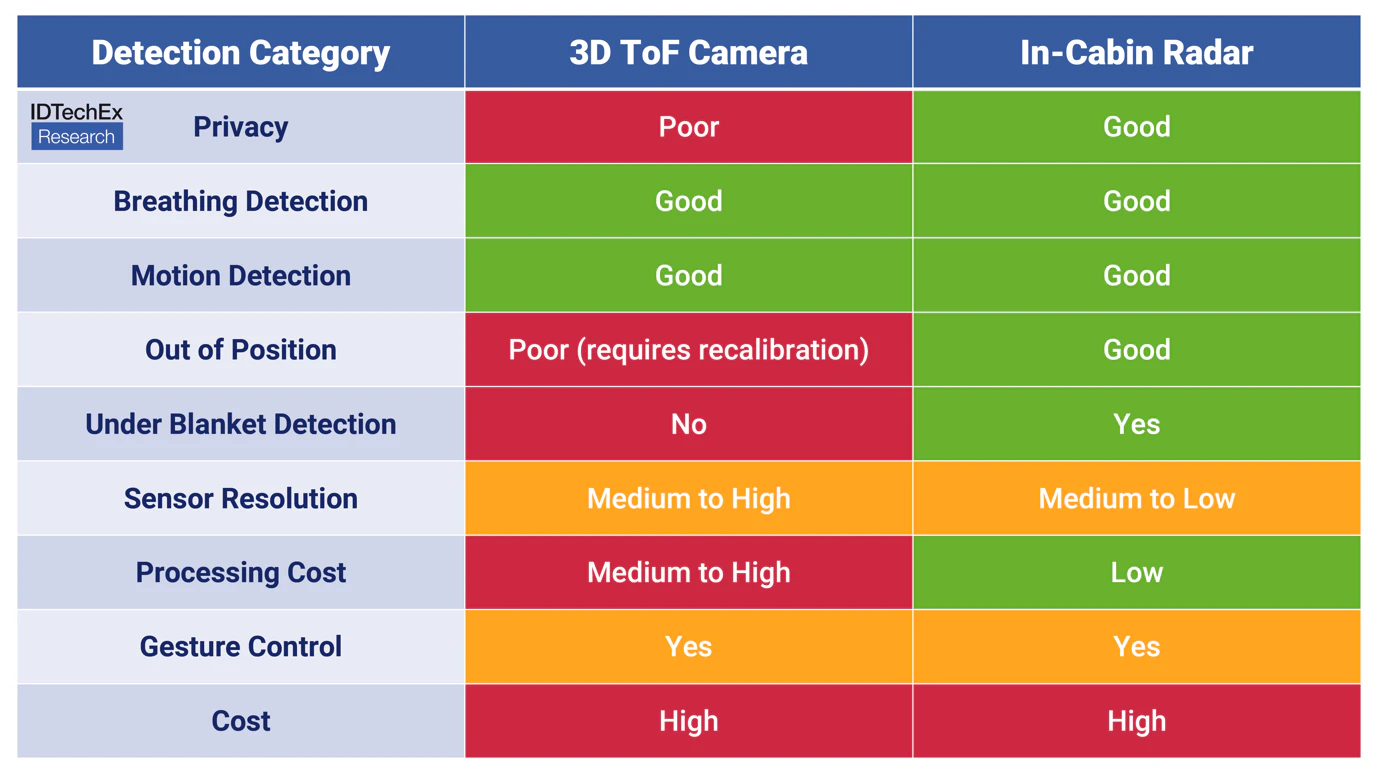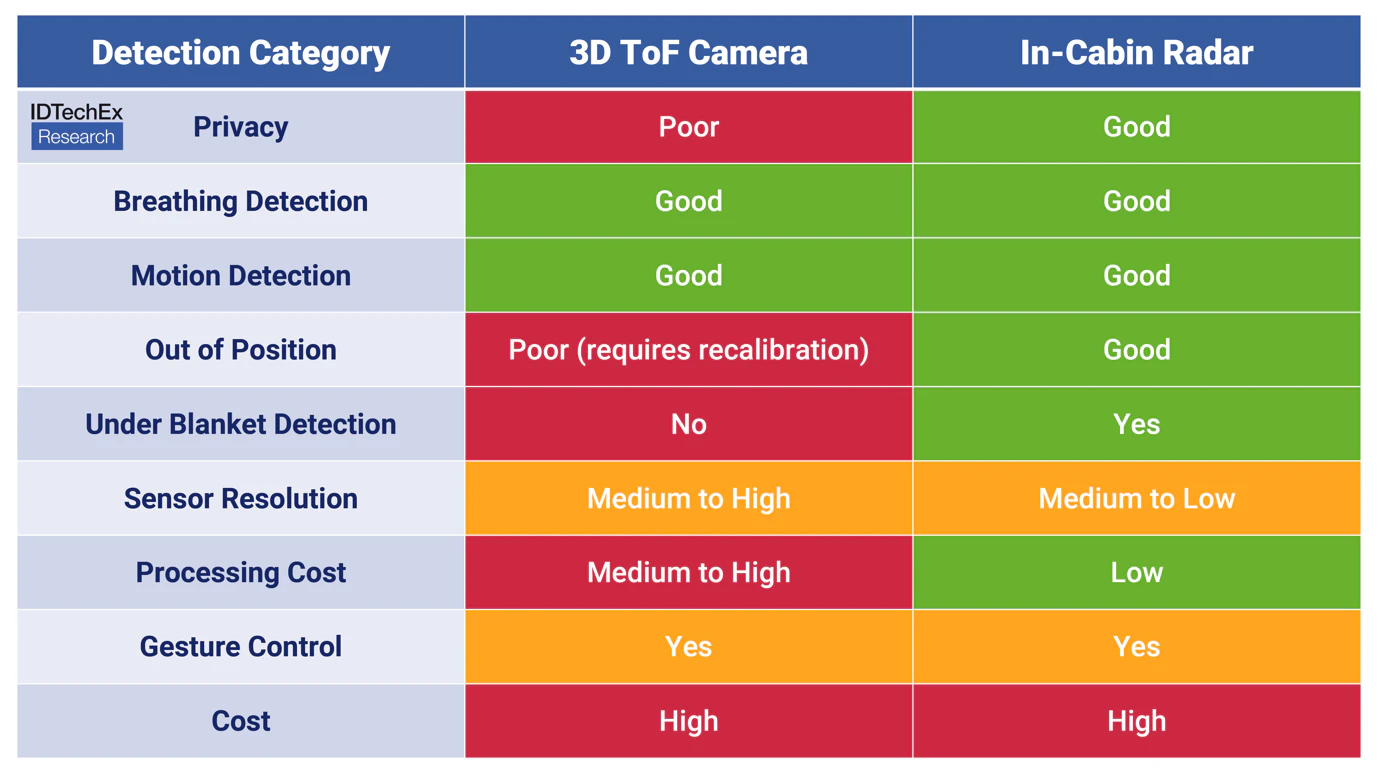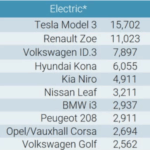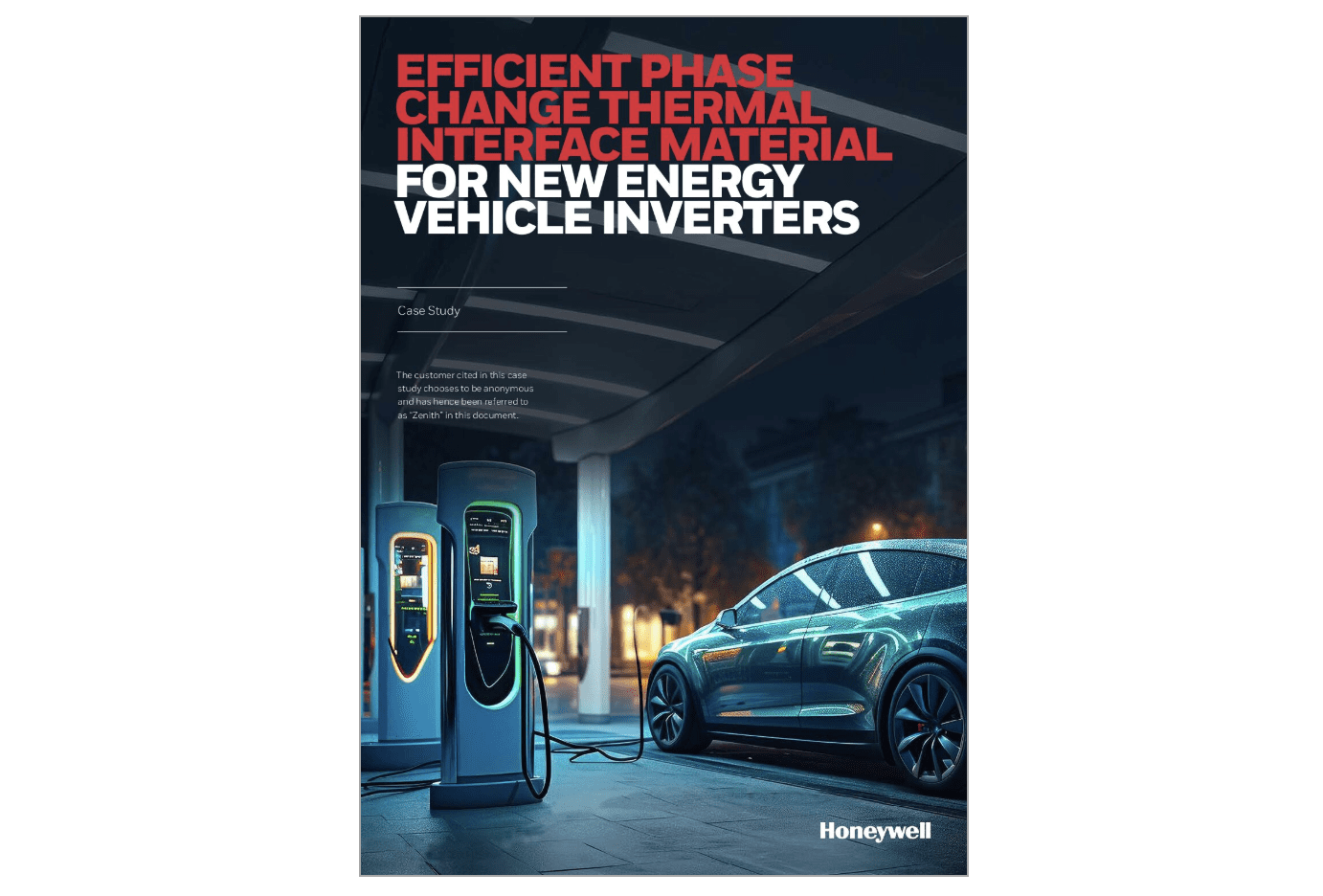Tesla’s in-cabin radar activation
Seeing machines’ 3D camera innovation
In April 2025, Seeing Machines, in collaboration with Airy3D, launched a 3D camera technology for in-cabin monitoring, integrating 5MP RGBIR 2D and 3D sensing in a single module. Using Airy3D’s DepthIQ™ technology, the system employs a diffractive optical element on a 2D sensor, delivering cost-effective 3D vision. This supports precision eye-tracking and occupant monitoring across the cabin, enabling integration with passive safety systems like airbags and seatbelts. The technology addresses future safety standards, such as Euro NCAP’s 2025 requirements, which incentivize 3D sensing for child presence detection. One of the historic barriers hindering the adoption of 3D cameras is the cost. This innovation, however, makes 3D sensing accessible beyond premium vehicles, potentially increasing adoption in mid-range models. However, camera-based systems face privacy challenges, requiring robust measures like face-blurring or onboard processing. Additionally, their reliance on complex algorithms demands significant computational resources, posing integration challenges for smaller OEMs.
IDTechEx forecasts that the integration of AI, radar, and 3D cameras will accelerate, not only because of the regulatory requirements such as Euro NCAP’s 2025 protocols, but also due to the fact that leading players want to use their in-cabin hardware and features to differentiate themselves from others. Tesla’s radar adoption, Seeing Machines’ cost-effective 3D cameras, and many other players’ (e.g., LG, etc.) similar strategies align with this trajectory, but each faces unique hurdles. More details on technical and commercial barriers are included in IDTechEx’s “In-Cabin Sensing 2025-2035: Technologies, Opportunities, and Markets”.

Conclusion
Tesla and Seeing Machines are pushing the boundaries of in-cabin sensing, each addressing distinct aspects of safety, cost, and user experience. Tesla’s radar activation exemplifies cost-effective innovation, and Seeing Machines’ 3D camera democratizes advanced sensing. As the in-cabin hardware market approaches around US$6 billion by 2035, IDTechEx believes that OEMs and component suppliers have significant opportunities to monetize this forthcoming trend. The synergy of radar, 3D vision, and AI will likely define the next generation of intelligent vehicles, ensuring safer and more personalized driving experiences.






